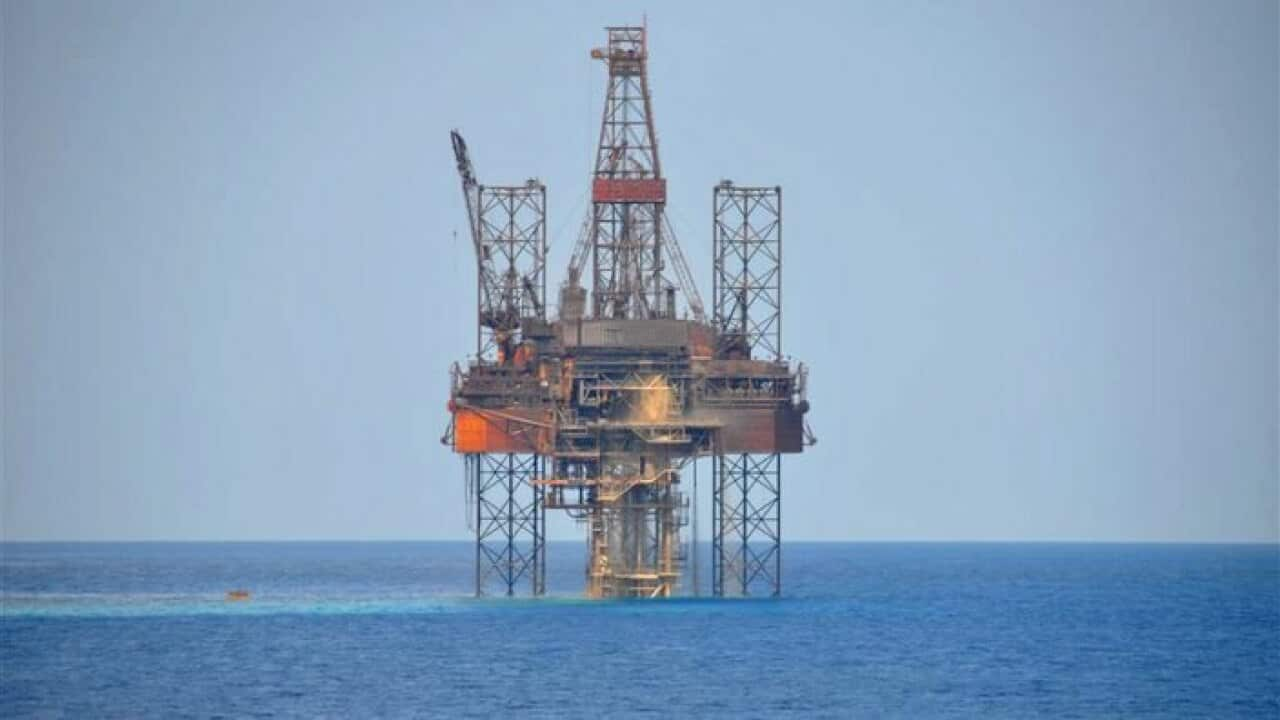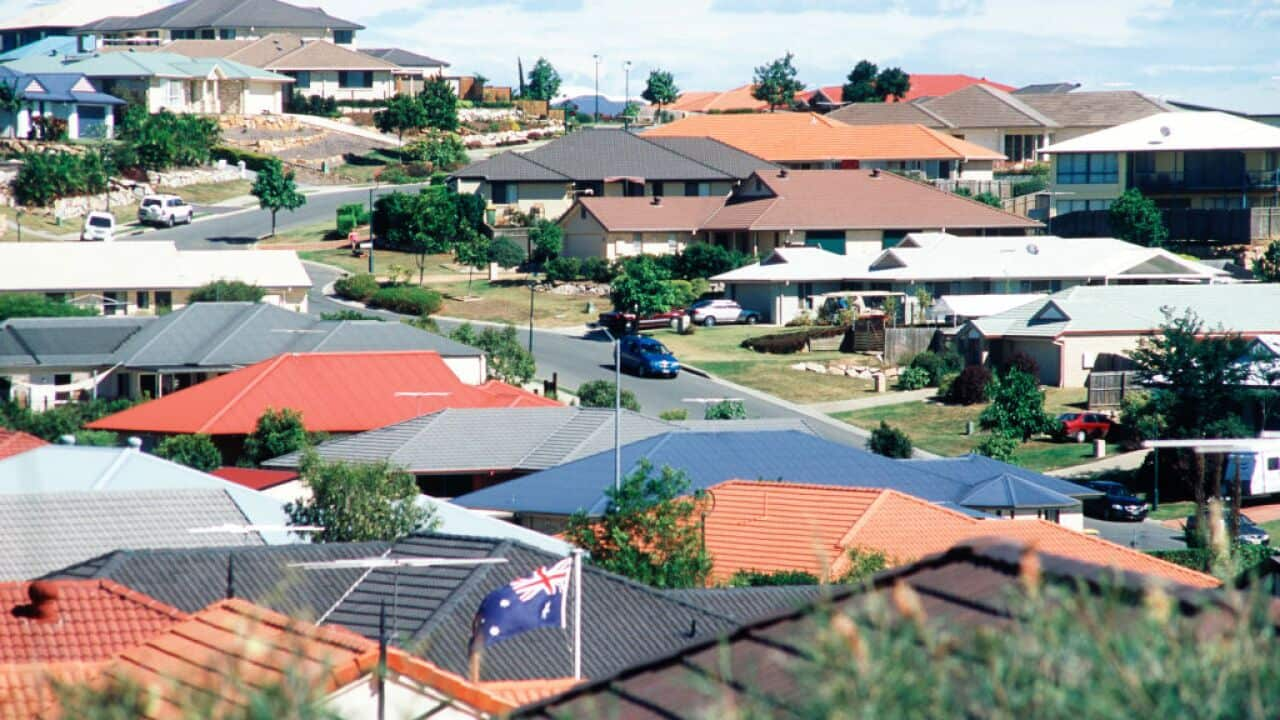At the intersection of coal and cattle country, high voltage power lines crisscross rolling hills, taking 24/7 electricity to nearby heavy industry.
This landscape in central Queensland is at the centre of a political debate that will shape the next decade: how should ?
As Labor looks to win over blue-collar votes with the promise of a Future Made in Australia and aggressive investment in renewables, the Coalition is seeding its nuclear agenda.
For grazier Neville Hansen, there's a simple reason he’d rather live next to a nuclear reactor than a wind farm: "reliable power."
"I think nuclear is the only way to go," he told SBS News.
"Renewables can't produce the level of electricity needed to power households and industry, and there’s a lot of industry around here."
Neville and his wife Megan run a cattle station at Kalapa, 30km west of Rockhampton, that looks directly onto the Stanwell coal-fired power station — Queensland's largest electricity generator– and a potential nuclear site under the Coalition's proposed energy plan.

Just down the road from the Hansens' property, the Stanwell coal-fired power station looms large on the horizon. Source: SBS News / Sara Tomevska
"There's a proposed wind turbine 250 metres off our boundary, so it'll devalue our land. There's been no consultation," Neville said.
"They’re not wind farms, they’re factories.
"It'll completely change the place."
Queensland an election battleground
The Hansens are proud producers of Angus cattle, the type Prime Minister Anthony Albanese and Opposition leader Peter Dutton were keen to snap photos with while donning Akubra hats at Rockhampton's Beef 2024 festival this week.
Queensland will be critical to winning next year’s election; Labor holds just five of the state’s 30 federal seats.

Cattle country in central Queensland has become a federal election battleground. Source: Supplied
"The picturesque background that you see behind us is now going to be littered with wind turbines, at least 275 metres out of the ground," Dutton told the media afterwards.
"To put it into perspective, the tops of those mountains will be cleared."
Dutton had promised details — including the cost and location of proposed nuclear reactors — before, but the self-imposed deadline has since been pushed out to "before the election".
"What we've said is that where we have coal-fired power stations that are coming to end of life, we'll consider all of those facts," he said.
"I want to make sure that we're not destroying the local environment to save the planet."
I want to make sure that we're not destroying the local environment to save the planet.Peter Dutton
'We're not mucking around'
About 100km down the road in Gladstone, industry is booming. Its port is a critical trade gateway for coal, LNG, alumina, aluminium, cement and bauxite — and maybe one day, green hydrogen.
"We're not mucking around, we're interested in serious investments," Energy Minister Chris Bowen told SBS News.
"More details will be announced in the budget on Tuesday night, but we are looking to maximise our opportunities."
We're not mucking around, we're interested in serious investments.Energy Minister Chris Bowen
So far, we know the policy will consolidate existing programs like Hydrogen Headstart ($2 billion), Solar Sunshot ($1 billion), the Critical Minerals Fund ($4 billion), National Reconstruction Fund ($15 billion) and millions for battery manufacturing.
Already two green-hydrogen projects are underway in Gladstone, headed by power company Stanwell and mining and green energy company Fortescue, with plans to use solar power to produce the future fuel and export it around the world.
Fortescue's energy boss Mark Hutchinson has warned power prices would need to halve for Australia to compete, while the International Energy Agency says inflation has driven the cost of global hydrogen projects up by 50 per cent. He warns greater government investment is needed to close the cost gap.
Bowen said: "We are not the only government investing in hydrogen, and all of those investments will see the cost of production come down, and I’m very confident Australia will be a global hydrogen superpower."
"It would be the biggest own goal in Australian history if we did not seize this opportunity."
Australia 'simply isn’t very good at manufacturing'
A few kilometres from Fortescue's project, high-purity alumina manufacturer Alpha HPA has already received a $400 million loan to produce its low-carbon product — critical for making EV batteries, smart-phone screens and semiconductor chips, markets dominated by China.
"We can't compete on labour costs, but we can compete on energy costs. That’s our advantage," Alpha's chief operations officer Rob Williamson said.
"International competitive renewable energy, delivered to your door, is key."

Rob Williamson from Alpha HPA says internationally competitive renewable energy is key for Australian manufacturing to succeed. Source: Supplied
Independent economist Saul Eslake has accused Labor of "fetishising" an industry that he says won’t boost productivity.
"The sad reality is, with very few exceptions, Australia simply isn't very good at manufacturing and never has been," he said.
"I can understand the need for government intervention in the transition to zero-carbon economy … but if our friends the Americans are willing to spend squillions of their taxpayer’s dollars subsidising the manufacture of solar panels then surely it makes more sense to buy our solar panels from them, at subsidised prices?"
Deloitte economist Pradeep Philip argues "the cost of doing nothing" may be greater.
"The risk is the rest of the world moves on and Australian business and workers are left behind," he said.
"We need to make sure we are incentivising business and investment in Australia. That is the single biggest thing that this budget can do for the economy."
But the political – and practical – challenges of transitioning to a net zero economy were laid bare on Thursday when .
"My government's committed to a net zero future," Albanese said. "Gas firms renewables."
That may be true, but it has opened Labor up to a fresh flank of attack from the Greens and independents, who have accused the prime minister of "climate betrayal".
Climate 200 is also targeting seats in Queensland, further upping the chances of a minority government for Labor at the next election.












